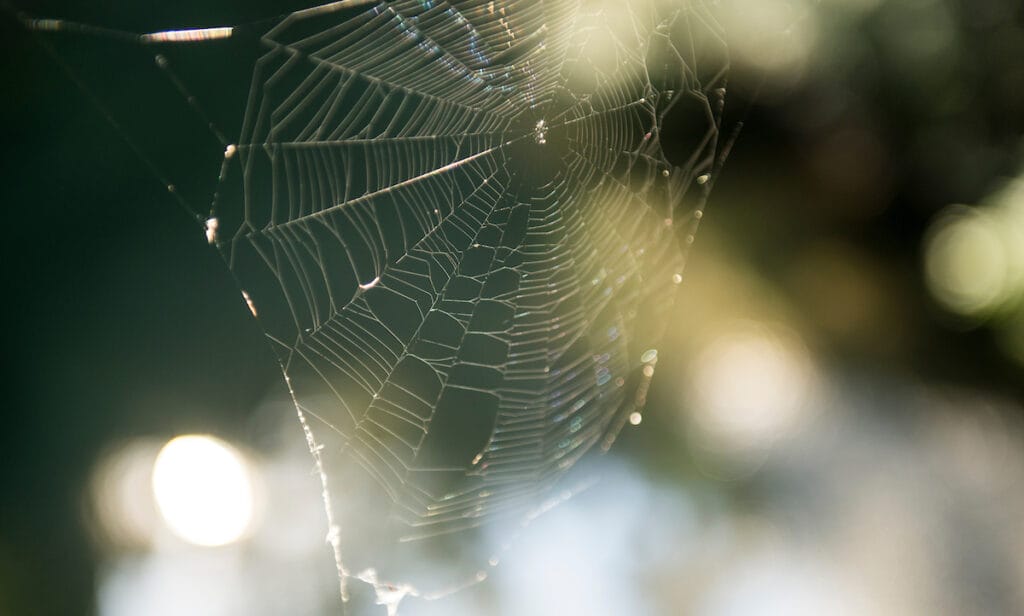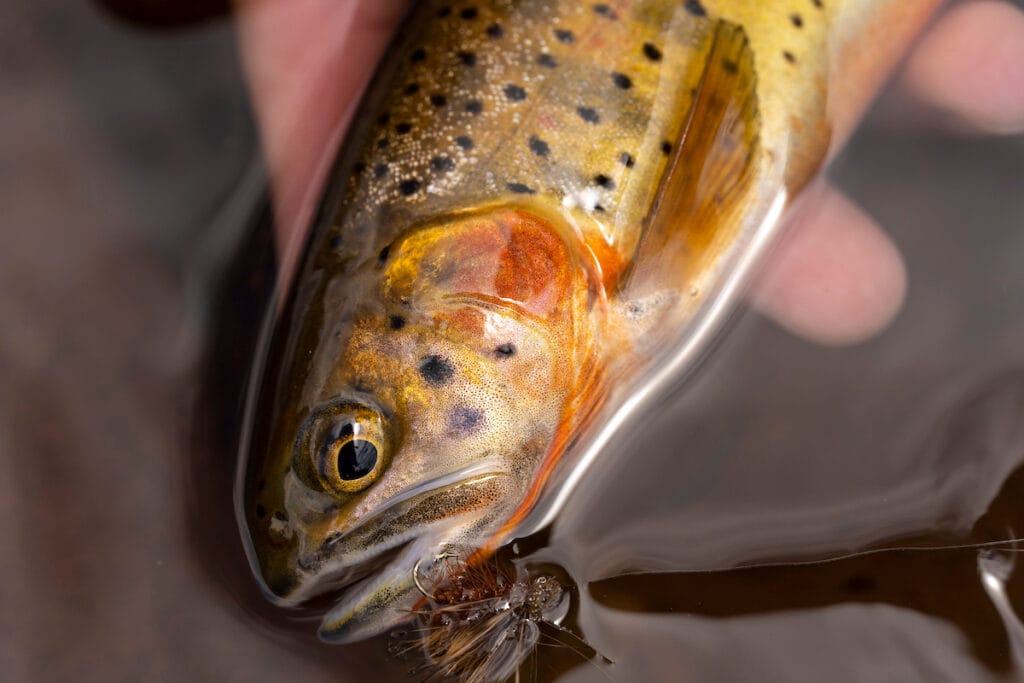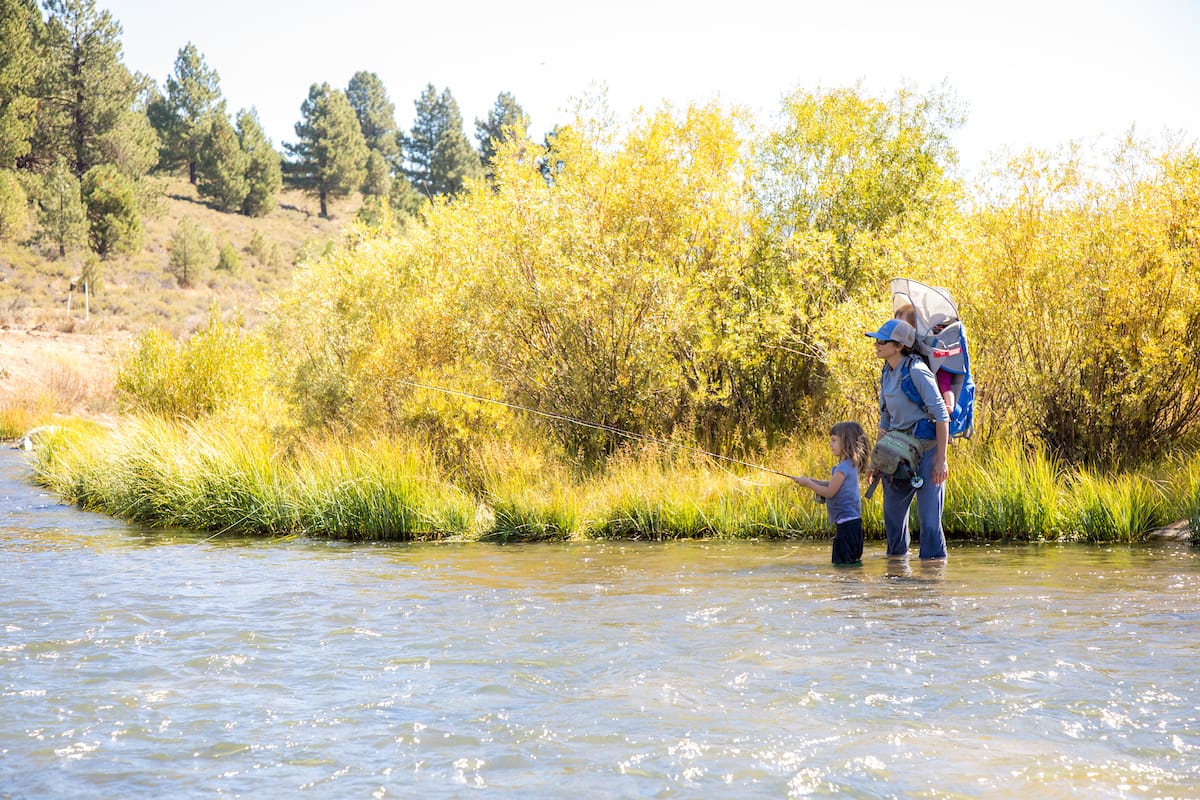I caught my first fish with a fine, mesh net in the creek behind my childhood home. The silver minnow measured no more than a couple inches, but your uncle and I placed it and a couple others in a bucket and carried them into our house like treasures pulled from the deep.
We kept those for years until they perished – one by jumping out of the fish tank in an act of bravery that only resulted in its death and the others from who-knows-what.
It would be years before I caught much more apart from a few fishing trips in the mountains for brook trout and a couple others on a nearby lake for rainbows.

I caught my first big fish as an adult. It was a northern pike with rows of razor-sharp teeth, slimy skin and a body like an eel. We cast poppers on the top of the water and the pike rose from the inky depths like sharks. Very little, I felt, could beat pulling a toothy monster from a lagoon after it surged out of the water to snatch a fly painted with pink and green nail polish. Those pike seemed to be everywhere, striking indiscriminately at anything floundering on the surface.
Pictures show me grinning with the 30-something-inch pike flopped across my hands.
Years later I found just as much joy catching a Bear River cutthroat trout from a stream in southwest Wyoming. I laughed in triumph when I scooped the tiny, native fish into my net before cursing briefly when it escaped. The fish marked successfully completing the Wyoming Cutt Slam—an effort to catch four native cutthroat strains in their respective drainages. It was so small it slipped through the holes in my fishing net, but I marveled at its colors, nonetheless.

Ironically, for a sport focused on size and quantity, all those experiences—the minnows, the pike and the Bear River cutthroat—provided me with the same joy and wonder.
It’s why the first lesson of fishing is that it doesn’t matter how many fish you catch. And contrary to all those social media posts on apps you aren’t allowed to use, it also doesn’t matter how big a fish was (or wasn’t).
Sure, catching fish is important to a 6-year-old learning the sport. It’s the difference between flogging a stream that might as well be a parking lot and discovering with glee the slimy, wriggly, colorful occupants of an unknown world.
But sometimes we lose sight of why we’re out here in the first place. Fishing has become synonymous with exaggeration, so ubiquitous is the angler’s epic narrative of a fish likely much smaller than he (or she) says. It’s become an activity whose participants seem to always have something to prove. Yet we all know, deep down, that that none of it actually matters—the truth or the tall tale.

So, if it feels good to say that rainbow trout was just a little longer or fatter than it really was, or fought a few minutes more, then tell that story. Or don’t. Nod along to the person next to you telling his or her own fish story (whether you believe it or not).
But remember to find your own joy, whether it’s the big fish or the little ones; if it’s one fish or no fish or a dozen. Go for 15 minutes and spend the rest of your time staring at butterflies, taking a nap in the sun and turning over rocks to see what lives underneath. Or get to the river as the sun starts to rise and fish until it’s so dark you need a headlamp to find your way back to your car.
Find the fish that fill you with wonder, the ones that make you gasp when you feel them on your line and reel them to your net—whether they’re 36 inches or they’re 2.
You have nothing to prove.
Love, Mom



